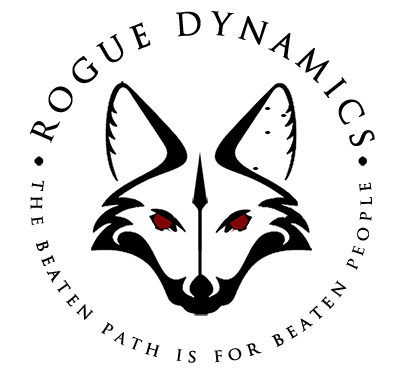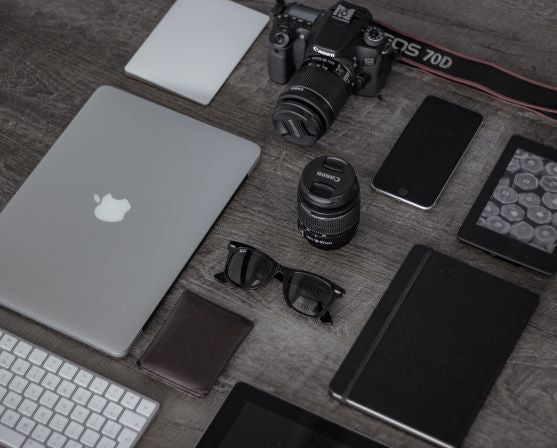
REMINGTON 700 UPGRADE
As Rogues we find ourselves not only developing new skill sets, but trying to hone and perfect the ones we have. While the primary limiting factor of any skill is the wingnut behind the tools (that’s you), you can only do so much with base equipment. I mean, why else would there even be different levels of gear if not for the different capabilities it offers from their quality. In this article I decided to look at the process of upgrading a set of Remington 700 bolt guns to make them even more effective. I started with a Remington 700 AAC-SD in .308 with a 20” barrel that was already mounted on the Magpul Hunter 700 chassis and a Remington 700 5R in .300 Winchester Magnum with a 24” barrel on an H&S Precision chassis. I’m going to start small and grow from there.

While Remington has come a long way with the triggers they put in their 700 series rifles, the X-mark pro series isn’t the best option on the market. Timney Triggers has been rolling out some amazing triggers for almost every firearm on the planet for years now, and their selection for the 700s is only getting better. For the .308 I opted for their Remington 700 Tactical trigger (http://www.timneytriggers.com/shop/timney-remington-tactical-replacement-trigger.aspx) and for the .300 WM I picked up the Calvin Elite Single Stage (http://www.timneytriggers.com/shop/Calvin-Elite-Remington-Model-700-P51.aspx). To say that the tactical trigger is sensitive is like saying your First Sergeant like his coffee mild. FOUR. OUNCES. That’s right, this thing is measured in OUNCES, not pounds. You don’t put your finger on the trigger then take up slack and then send a round. You put your reticle on the target, and feel the trigger as the round leaves the rifle. This may be too sensitive for some shooters, especially if you are new to the world of long range, but I love the fact that it removes all issues with trigger squeeze and breathing, you don’t effect the rifle long enough to alter the round’s trajectory. The Calvin Elite is far less sensitive, but still dials down to 8 ounces, with its high point being that (unlike the tactical) it offers a safety and comes in either curved or straight configurations. The triggers are VERY easy to install with a punch and hammer and Timney basically grunt-proofs the process with slave pins, so don’t worry about a hefty smithing bill here. Both of these rifles are tack drivers with the trigger upgrades, but there was still more to be done to get them where I wanted them.

I didn’t want just another stock that had minimal adjustability and weighed a ton from wood or composite material, and I definitely didn’t want to have to strap some pad onto the buttstock to get my rifle setup the way it was comfortable, so I swapped the stocks on both the .308 and the .300 WM out for the Modular Driven Technologies TAC21 chassis system (https://mdttac.com/tac21-chassis-system.html) because it allowed me flexibility in the parts I chose while maintaining other key characteristics like a free-floating barrel and a box magazine system. The TAC21 comes as a multiple-part system that uses standard AR parts for the pistol grip and buttstock and widely available AICS magazines. There’s no need for a picatinny rail or rings that mount with tiny screws to your action, because the TAC21 will give you a 20 MOA rail that runs from the back of the action clear down the barrel for almost a full 20 inches, more than enough room for your glass and a clip-on site. Now, this is not the lighter weight LSS system that MDT offers, this beasty weighs in at between 3 and 3.5 lbs. of 6061 Aluminum and can handle any short action from a .223 up to a long action .338 Lapua Magnum. The smithing on this thing is so easy a grunt can do it (I know, one did). It’s pretty much “turn a few bolts, slide this, connect that, and tighten it all up.” The fit and finish on these is something to behold. The lines all just “make sense,” with no wasted flashes or snagging tweaks, and there are multiple positions down the length of the forend that allow for picatinny rails and other accessories to be mounted. On each of my rifles I use a set of Hoptic USA Picatinny Rail Quivers (http://www.hopticusa.com/all-products) to hold specialized rounds (intermediate barrier penetrators, tracers, APIs, etc.) keeping them at my fingertips in an emergency situation.

Since the TAC21 uses standard AR parts I grabbed a Magpul ACS-L stock (https://www.magpul.com/products/acs-l-carbine-stock-mil-spec) to mount on a standard buffer tube for the .308, and the PRS (https://www.magpul.com/products/prs-precision-adjustable-stock-ar15-m16) for the .300 WM. The PRS was an easy choice with its adjustable rise and length of pull and already having an integrated picatinny rail, but just slapping one on both rifles was a total cop-out, so I chose the ACS-L for its storage compartment and the ability to mount a picatinny rail underneath (more on that later). The stock works well, but since it was designed for an AR it doesn’t quite have the capabilities I wanted it to, nor does it give the rise that I need for my optic. To solve this issue, I went with the Battleline Industries SAPR system (https://battlelineindustries.com/bli-new/?q=sapr/sapr-magpul). The SAPR allows your standard Magpul or SOPMOD stock to function more like the Magpul PRS. The SAPR gives you adjustable rise and the ability to cant the buttstock pad, and if you choose the Magpul CTR you’ll be in at less weight than the PRS. Even with the slightly heavier ACS-L the weight in the back is negligible, and the rifle balances itself out quite nicely. Unlike most bolt guns on the market, this also grants the ability to quickly adjust the stock forward and backwards on the buffer tube for length of pull adjustments. The SAPR system is a solid platform for the back-end of the rifle and has proven to be a great choice. The one thing that I have to point out, and to be fair I was warned at great length about this by the founder of Battleline, you had better use some lock-tight on the threads of all of the bolts on the SAPR once you’ve installed it and adjusted it to your liking. If you let the threads stay bare, it WILL loosen up and you WILL be sliding all over the place while you try to look through your scope.

So with my ACS-L/SAPR combo and PRS mounted, I realized that both rifles were still a little longer than I wanted them to be for portability. I’m not a huge fan of having a 6 foot long case in the bed of my truck or having an extra foot of clearance to worry about when I have the rifle in my ruck. I looked around and contacted the folks over at LAW tactical about their folding system to see if it would work (http://www.lawtactical.com/ar_folding_stock_adapter_gen_3_m_p/99312.htm). The LAW is unlike anything else on the market! This thing works on your standard AR platform (so why not on the TAC21, right?) to allow the entire buffer tube and buttstock to swing to the left of the rifle. You can adjust the tension to make the buttstock swing with exactly the tension you want, and it only locks closed, so there’s nothing to fiddle around with to get your rifle up where you can start running it. On the bolt gun this is less of a concern since you won’t likely be resorting to it in a hurry, but it cuts the length down from 43” without it to 33.5” (on the .308, just add 4” for the .300 WM) with it folded down. The other upside the LAW Tactical Folder brings to the party is that it allows easy access to the interior of the buffer tube, which currently houses a recoil reduction system and would allow for some small survival items if needed. Now for the sake of testing I did keep the stock folded to the side and tossed the rifle up on a barrier and took a shot at 50m (with the .308, I’m not stupid). It was a hit, and in a pinch it could work, but I wouldn’t recommend running with this too much because it wasn’t easy and in the time it took me to line-up the reticle I could have EASILY swung it closed.

The final piece in assembling the chassis to become a functional rifle was the pistol grip, so talk about a variety of options! You could literally go with ANYTHING under the sun, and I have to give honorable mentions to the Hogue grip and the BoAR grip in this section because they were both comfortable and allowed for excellent control of the weapon, but I eventually settled on the Magpul MIAD (https://www.magpul.com/products/miad-gen-1-1-grip-kit-type-1) for both rifles for a couple of reasons. The first and most important was that the MIAD offers the ability to fine-tune the grip width and design, and the more stable and comfortable the grip is on a precision rifle the better off you’ll be. Another reason I went with the MIAD was the storage in the grip. The ability to remove the plug but have it firmly lock in went well with the other tiny tuck away places for storing small survival gear or tools that I need. I customized the MAID’s front and rear to fit perfectly and the overall chassis was up and running.

Earlier I hinted at another reason for choosing the ACS-L: that it could have a picatinny rail mounted underneath. For that particular piece I had to turn to B&T Industries (http://www.accu-shot.com/index.php). The BT52 mount was easy to install (especially since I had to take the ACS-L apart to install the SAPR anyway) and allowed me to mount an Accu-Shot Monopod on the rear. For the front I went with the ATLAS Bipod, also by B&T. The combination of these two items gives me the ability to basically bench-rest my rifle in the field, just shouldering up for resistance and touching off the trigger. The ATLAS starts out as a 4.75-9 inch bipod, but if you need a little lift, the feet can be removed and a 3” leg extension can be added in to give you up to 12 inches of rise. The ATLAS also has interchangeable feet, so it doesn’t matter if I am shooting on concrete, gravel, or the hood of my truck I will be stable and accurate. The Accu-Shot comes in 3 different heights and can be adjusted by a push-button on the side or a finger wheel for precisely dialing in your rifle, then swung out of the way when you need to change targets quickly or just don’t want it snagging on things. Both rifles are running this setup, so I can switch out feet, leg extensions, and different lengths of monopod between them.

While I haven’t landed a can for either rifle quite yet, I wanted to keep my options open, so I put the Surefire Warcomp (http://www.surefire.com/tactical-equipment/suppressor-adapters/warcomp-flash-hiders/warcomp-762-5-8-24.html) on the .308. This does an excellent job of not only reducing the muzzle rise of the rifle, but kills the flash to almost nothing. The recoil on the .308 is within tolerable limits to begin with, so there was no need to hunt around for something to level that out, but with the .300 I took my time and did some research. The mule-kick that comes from that trigger pull needs to be tamed, so I turned to an old friend in the industry. I have reviewed a few PWS muzzle devices before and was dying to get my hands on the Precision Rifle Comp or PRC (http://primaryweapons.com/store/product/precision-rifle-compensator/) that they had developed specifically for this application. The PRC sucks the recoil out of the .300 to just about the same as the .308! You read that right, I could shoot out to a 1,000m all day and my shoulder won’t even whine about it! The wide profile on the bottom the device also keeps the blast from kicking up dust and messing with your follow-up shot.
To top off a great rifle you need a great piece of glass. At this point I think it’s pretty well known that I have an uncommon affinity for Vortex products and on this project I went big. I topped the .308 with a Vortex Viper PST 4-16X50 FFP MRAD optic (http://www.vortexoptics.com/product/vortex-viper-pst-4-16x50-ffp-riflescope-with-ebr-1-moa-reticle), and the .300 with a Vortex Viper PST 6-24X50 FFP MRAD with the EBR-2c reticle (http://www.vortexoptics.com/product/vortex-viper-pst-6-24x50-ffp-riflescope-with-ebr-1-mrad-reticle). Both optics are mounted with Vortex’s precision match rings to keep them locked in place no matter what, and everything on top of the rifle has a lifetime warranty against anything I could ever possibly do to it (a big reason I went this direction). The Vortex Viper PST comes out of the box with a 4” sun shade, tactical turrets, and an illuminated reticle. The tactical turrets have a CRS Zero Stop system to reset them to your zero after you hit the range, and with the MRAD version each click is .1 Mil and each complete turn is 5 mils, all combined with a parallax setting that goes from 35 yards to infinity. The glass is really clear with no noticeable distortion on the edges like some scopes, and even with the drastic temperature changes the day I took it to the range (from 38º to 65 º and back to 42 º Fahrenheit) there was zero issue with fogging or distortion. The EBR-2c reticle may be a little bit much for some shooters, but I think it works really well for the long range shots as it offers the shooter the ability to make windage and holdover adjustments while increasing elevation all on the fly when there may not be time to dial in a new “DOPE.” And it would be a crime not to mention that without Alan at A&A Optics (www.aaoptics.com) hooking me up with this impossible to find piece of glass at a price better than anything else I could find this entire project would still be in the books instead of on the web.


So with these amazing rifles in my arsenal what would I change? Well… there are one or two things, but understand that not one of them are a big enough deal that I’m changing or regretting my decisions. Understanding and granting that the LAW tactical folder isn’t being used for the application it was designed for, I would love to see a “plug” of some type that could thread into it to seal the buffer tube, creating a storage space that wouldn’t have things falling out of it. My main critique for Magpul would be to offer a wide-bottomed plug for the MIAD that would allow for a shelf where the heel/blade of the hand could rest, as well as either a rubberized version or rubberized front and back strap kit for added traction. I would have loved an Accu-Shot Monopod that has a QD system, much like the QD mounts on some optics, so that it would be faster and easier to get take it off if it’s in the way or switch out between the short and medium heights for multiple monopods on one gun. This is a minor issue, but of all of the critiques I have, this is one I would most like to see come about. Finally, the one complaint I have about the Viper PST is that, like many of the reviewers online, I found the magnification ring to be incredibly stiff and difficult to maneuver, I’m hoping this loosens up with time.
All together these rifles are amazing. The triggers are crisp, the TAC21 is well balanced and comfortable, the SAPR system lines everything up wonderfully, the B&T products keep it solid and easy to shoot from, and the Vortex glass is crystal clear. On the first time out I was shooting sub MOA, “keyhole-ing” 3 rounds in a row at 100m on the .308, and ringing steel out to 600m with ease the next time I took it out. I honestly haven’t stretched the .300 out past 600m yet, but I’m eagerly looking forward to the chance. If you are looking for a place to start upgrading your bolt-gun that will do more than just make it look pretty, this is easily your best option.



